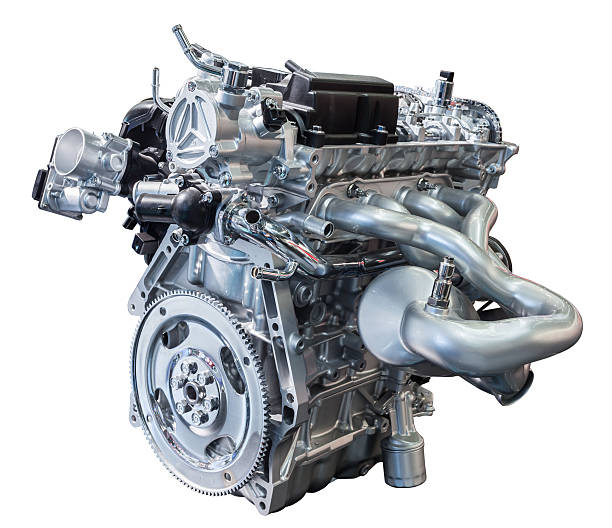The Hidden World of Automotive Fluid Dynamics
Rolling down the highway, few drivers realize they're piloting a masterpiece of fluid dynamics. Beyond the sleek exteriors and powerful engines lies a complex network of systems relying on the precise flow and behavior of various fluids. This often-overlooked aspect of automotive engineering plays a crucial role in vehicle performance, efficiency, and longevity.

The Lifeblood of Engines: Oil Flow Dynamics
At the heart of every internal combustion engine lies a complex network of oil passages and channels. Engine oil doesn’t simply pool in the sump; it’s actively circulated through precision-engineered pathways. The design of these oil galleries is a delicate balance between providing adequate lubrication and minimizing parasitic power losses.
Modern engines employ variable oil pumps that adjust flow based on engine speed and load. This adaptive approach ensures optimal lubrication while reducing unnecessary pumping losses. Some high-performance engines even utilize dry-sump systems, which use multiple scavenge pumps to keep oil circulating efficiently during high-G cornering or acceleration.
The study of oil aeration and foaming has led to breakthroughs in crankcase ventilation design. By managing the air-oil mixture within the engine, engineers can reduce power-robbing windage and improve overall efficiency.
Coolant Circulation: The Unsung Hero of Thermal Management
While often overshadowed by more glamorous components, a vehicle’s cooling system is a marvel of fluid dynamics. The precise flow of coolant through the engine block, cylinder heads, and radiator is crucial for maintaining optimal operating temperatures.
Advanced computational fluid dynamics (CFD) simulations allow engineers to visualize and optimize coolant flow. This has led to the development of split cooling systems, where different parts of the engine are maintained at varying temperatures for improved efficiency and reduced emissions.
The integration of thermal management with other vehicle systems has given rise to innovations like exhaust heat recovery. By capturing waste heat and transferring it to the coolant, these systems can speed up engine warm-up times and improve overall thermal efficiency.
Brake Fluid Dynamics: Stopping Power at Your Fingertips
The hydraulic braking system in modern vehicles is a testament to the power of fluid dynamics. When you press the brake pedal, you’re initiating a complex chain of events that relies on the precise behavior of brake fluid under pressure.
Recent advancements in brake-by-wire systems have introduced new challenges and opportunities in brake fluid dynamics. These systems use electronic controls to modulate brake pressure, requiring even more precise fluid behavior to ensure consistent pedal feel and stopping performance.
The development of high-temperature brake fluids has enabled the creation of more compact and efficient braking systems. These advanced fluids maintain their performance characteristics even under extreme conditions, allowing for smaller brake components without sacrificing stopping power.
Fuel System Dynamics: Precision Mixing for Optimal Combustion
The journey of fuel from the tank to the combustion chamber is a carefully orchestrated process governed by fluid dynamics. Modern fuel injection systems rely on precise control of fuel pressure and flow to achieve optimal air-fuel mixing.
Port fuel injection systems have given way to direct injection in many modern engines. This shift has introduced new challenges in fuel atomization and mixture formation within the combustion chamber. Engineers must now account for the complex fluid dynamics of fuel spray patterns and their interaction with in-cylinder air flow.
The pursuit of cleaner emissions has led to innovations like stratified charge combustion, where fuel is precisely layered within the cylinder for more efficient burning. Achieving this requires an intricate understanding of fuel spray dynamics and charge motion within the combustion chamber.
Transmission Fluid: The Unsung Hero of Power Transfer
Automatic transmissions are marvels of fluid dynamics, relying on the precise behavior of transmission fluid to transfer power, cool components, and actuate shifting mechanisms. The development of continuously variable transmissions (CVTs) has introduced new challenges in managing fluid dynamics within the transmission.
Modern dual-clutch transmissions use hydraulic systems to engage and disengage clutches with lightning-fast precision. The fluid dynamics within these systems must be carefully controlled to ensure smooth shifts and optimal power transfer.
As transmissions become more complex, with additional gears and integrated hybrid systems, the role of transmission fluid dynamics becomes even more critical. Engineers are developing new fluid formulations and flow management techniques to meet the demands of these advanced powertrains.
The Future of Automotive Fluid Dynamics
As vehicles continue to evolve, the importance of fluid dynamics in automotive engineering will only grow. The shift towards electrification brings new challenges in thermal management and lubrication. Battery cooling systems must handle high heat loads while maintaining uniform temperatures across large battery packs. Electric drive units require specialized fluids that can withstand high speeds and provide effective cooling.
The integration of artificial intelligence and machine learning into vehicle systems opens up new possibilities for adaptive fluid management. Imagine a car that can adjust its cooling system in real-time based on driving conditions, or optimize its transmission fluid dynamics for maximum efficiency on the fly.
Nanotechnology is another frontier in automotive fluid dynamics. Researchers are exploring the use of nanoparticles to enhance the properties of engine oils, coolants, and other fluids. These advanced materials could revolutionize heat transfer, reduce friction, and extend component lifespans.
As we peer into the future of automotive technology, it’s clear that the hidden world of fluid dynamics will continue to play a crucial role in shaping the vehicles of tomorrow. From improving efficiency and performance to enabling new powertrain technologies, the careful management of fluids will remain at the heart of automotive innovation.





